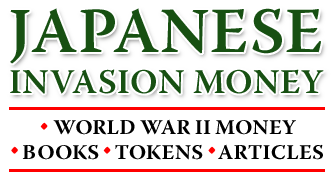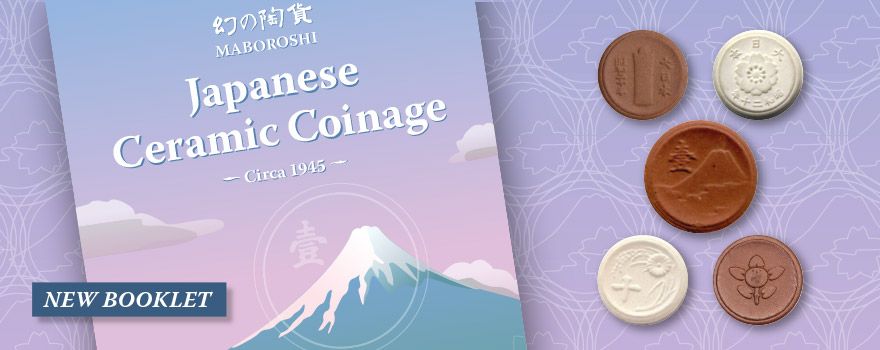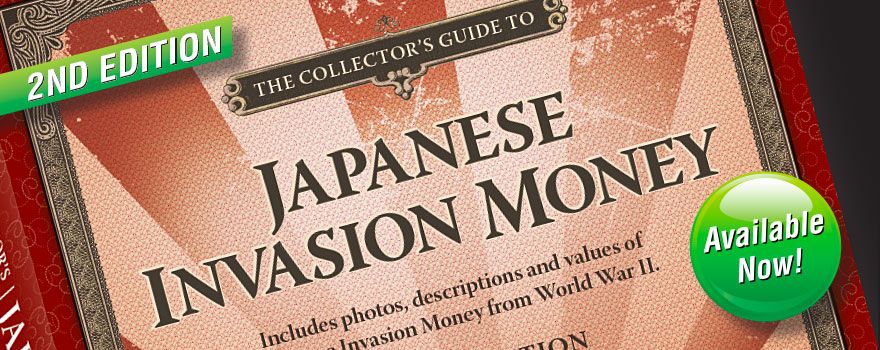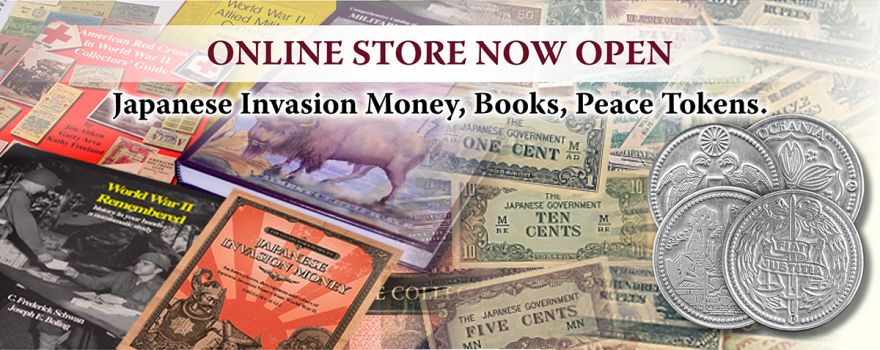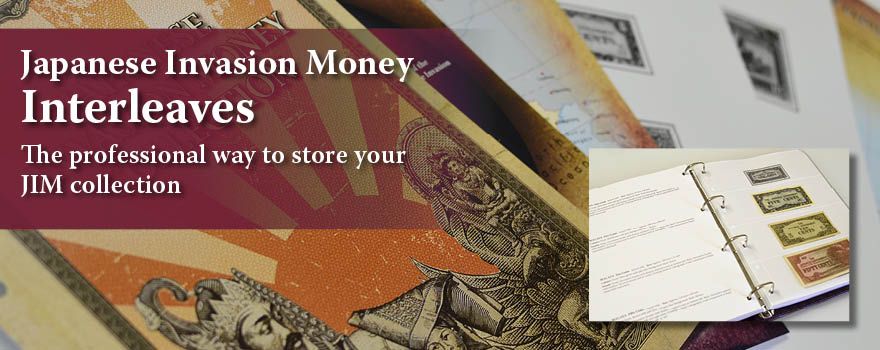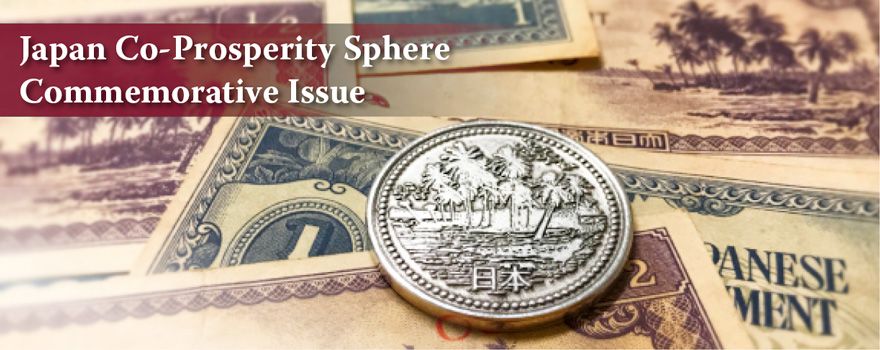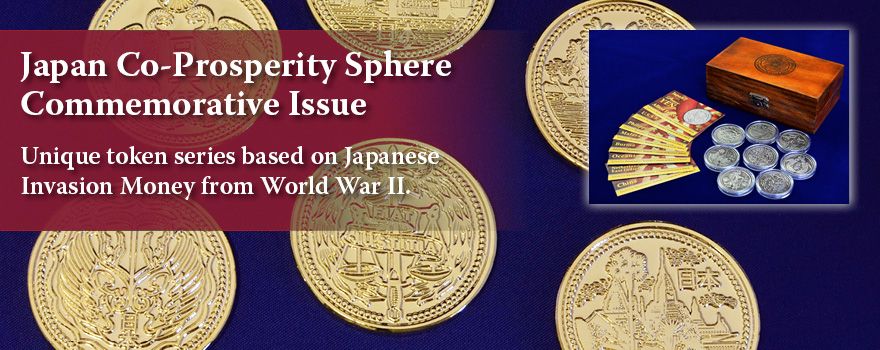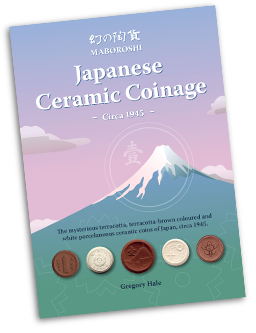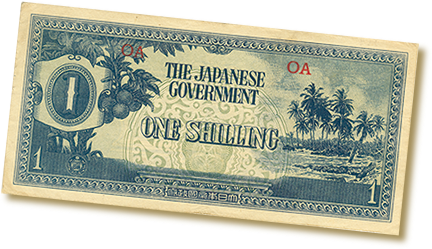Japanese Clay Coins - Maboroshi - Japanese Ceramic Coinage - Circa 1945
The mysterious Japanese ceramic coins (Japanese clay coins) from 1944–45 provide a snapshot of a brief and fascinating part of Japanese numismatic history – the fragile link between war and peace in Japan.
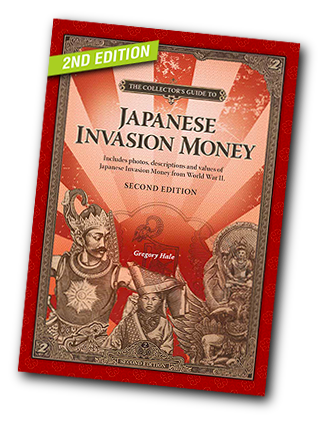 The Collector’s Guide to Japanese Invasion Money book - 2nd Edition
The Collector’s Guide to Japanese Invasion Money book - 2nd Edition
This book is a culmination of more than ten years of research and study in military numismatics, culture, psychology, art and design.
Watch video about the book
- Quantities, blocks and detailed values
- Numerous photos of bank notes and varieties
- Reference codes from the Standard Catalogue of World Paper Money and The Catalog of Japanese Coins and Bank Notes to assist collectors in identifying notes and varieties
- A new grading guide specifically for JIM and a quick reference table to assist with self-grading
- Specimen and counterfeit detecting information
- Updated collectors’ tables including newly discovered blocks and numbers and hard-to-find blocks and serial numbers highlighted.
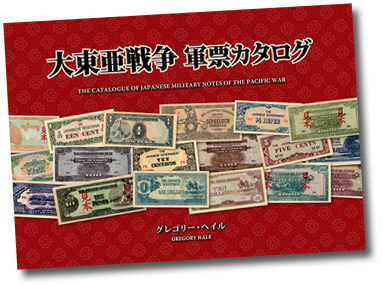 大東亜戦争 軍票カタログ(日本語版)
大東亜戦争 軍票カタログ(日本語版)
The Catalogue of Japanese Military Notes of The Pacific War
軍票カタログの最新版! どのカタログよりも新しく、細かく分類された記号と番号、グレード別の価値が多数のカラー写真と共に記載されています。
ご購入はこちらから!
What is Japanese Invasion Money?
Japanese Invasion Money (JIM) is the currency that was issued by Japan to replace local currencies of areas they had occupied, defeated or had plans to, in World War II. JIM was officially known as Southern Development Bank Notes.
The main purpose of introducing the new currencies was to cripple the economies of these areas as with the introduction of JIM their own currency was rendered worthless. Japanese troops strongly enforced the use of their new ‘mickey mouse’ or ‘banana’ money and harsh penalties, including death, were applied for people caught using non-JIM currency.
Japan’s prime minister of the time, Matsuoka Yosuke and the Government had a vision of a united Asian power led by Japan. This was to be known as the Greater East Asia Co-Prosperity Sphere. This concept, similar in theory to today’s European Union, would be independent of the West and be a force led by Japan for the greater prosperity of Asians. Although Japan was promoting prosperity for all Asians, they still had a distinct ‘pecking order’ with the nation’s allies.
By the end of World War II, invasion monies were issued for: Philippines; Burma (Myanmar); Malaya (Malaysia, Singapore); the Dutch East Indies/Netherland Indies (Indonesia) and Oceania (British New Guinea, the Solomon Islands , the Gilbert Islands and Australia).
Throughout WWII, JIM notes became souvenirs of returning soldiers who brought back captured notes to Australia and used these as proof of the intended invasion of Australia by Japanese forces.
For the avid collector, JIM notes are an ideal item to make into a collection. You may start with just collecting the notes that relate to your chosen country or you can complete a standard set collection with a note to represent each denomination and region. For the more-serious collector, you can add to this examples of prefixes, variations, propaganda notes, flyers and coins.
Japan Co-Prosperity Sphere
Commemorative Issue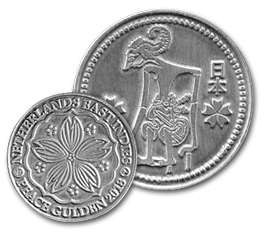
Unique token series based on Japanese Invasion Money
from World War II.
8 different tokens to collect
• Burma • China • Japan • Malaya • Netherlands East Indies • Oceania • Philippines • U.S.S.R.
Proudly designed and made in Australia.
Each token is supplied in a coin capsule along with a descriptive card and envelope.
These are essential for collectors of Japanese Invasion Money from World War II.
Netherlands East Indies
The design of the Netherlands East Indies Peace gulden has been inspired by The Japanese Government coins, issued in World War II.
The Arjuna illustration was hand-drawn by Brisbane-based designer, Gregory Hale. He used an original Japanese Government 10 sen coin as his reference to faithfully recreate the illustration.
Arjuna is a character from a traditional Javanese wayang kulit (shadow puppet) fable. Japanese coins featuring Arjuna were minted in 1943 and 1944. Many of these mysterious coins were lost at sea en route to Java, making them rare and valuable to collectors.
Size: 34 mm Ø. Includes coin capsule.
Buy now
Click here to view all tokens
Complete Sets Available Now
A very limited number of complete sets are available in both antiqued finish and gold plate.
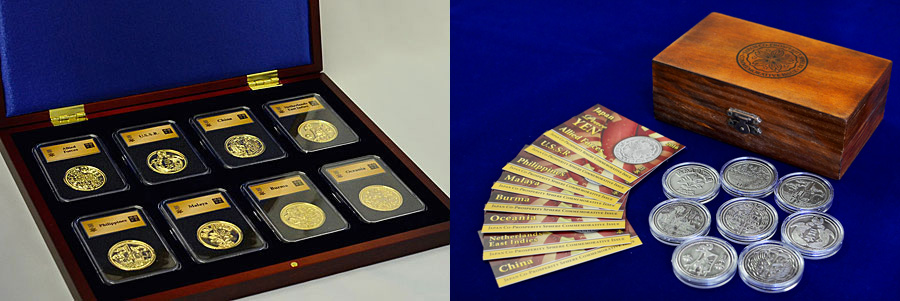
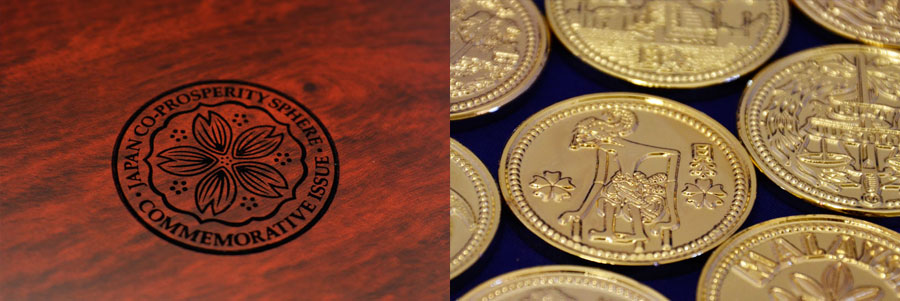
Interleaves collector’s table in Excel or PDF

